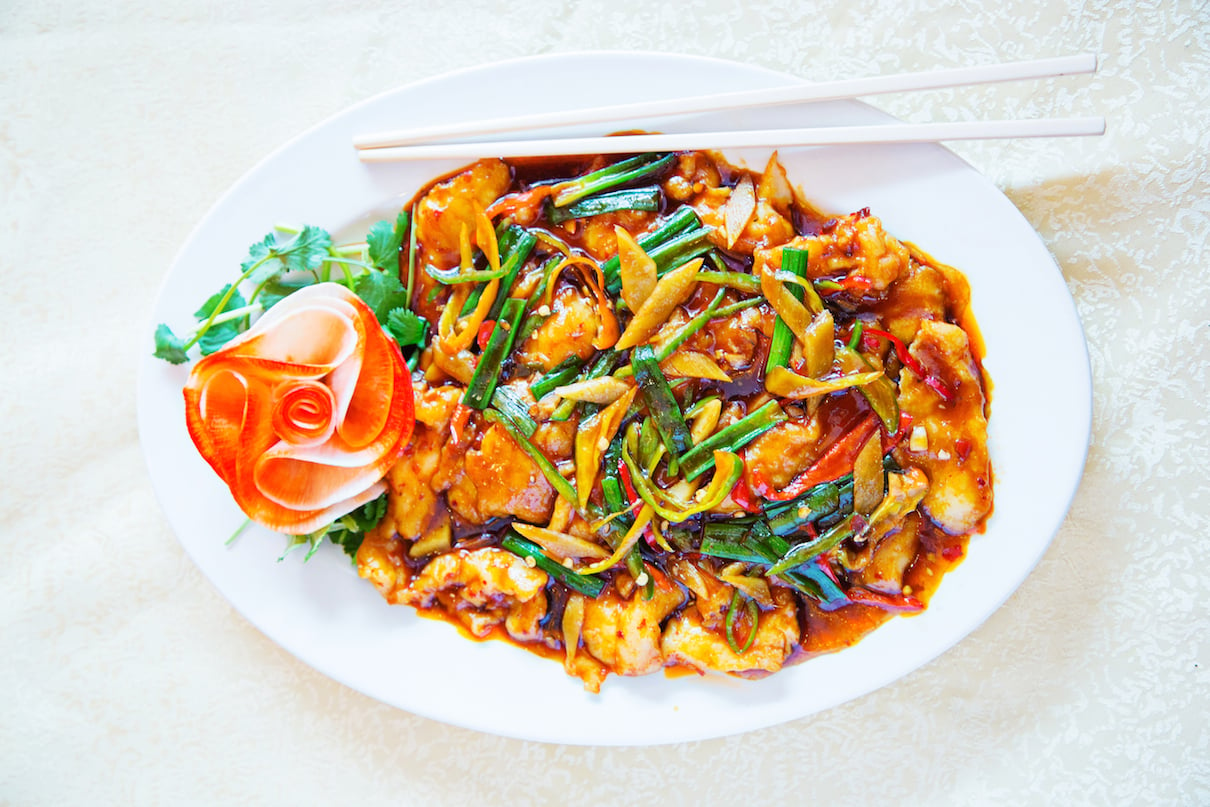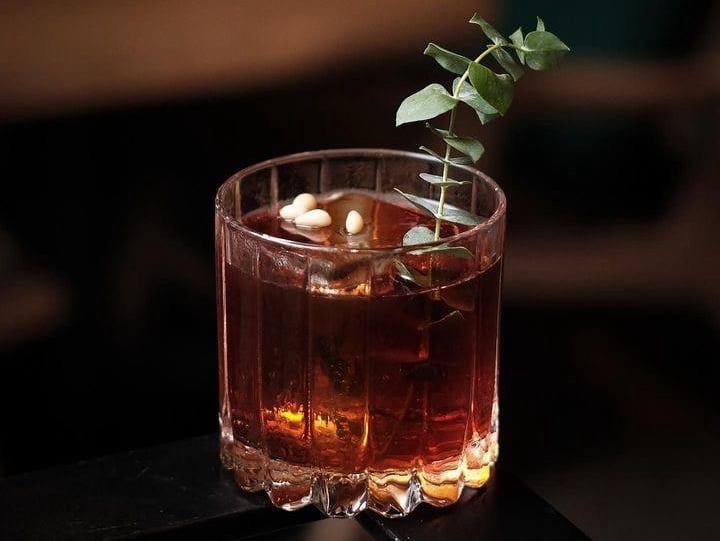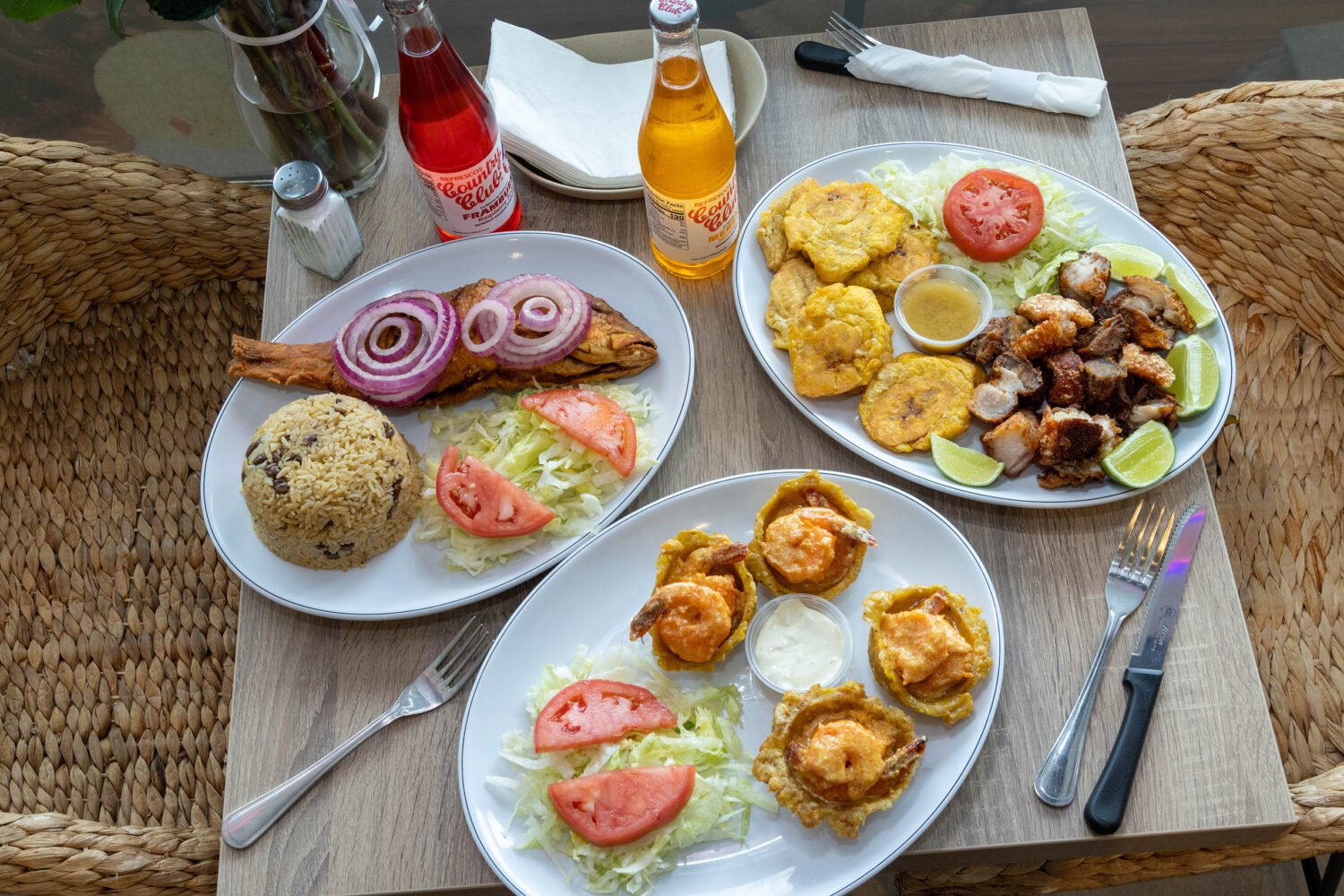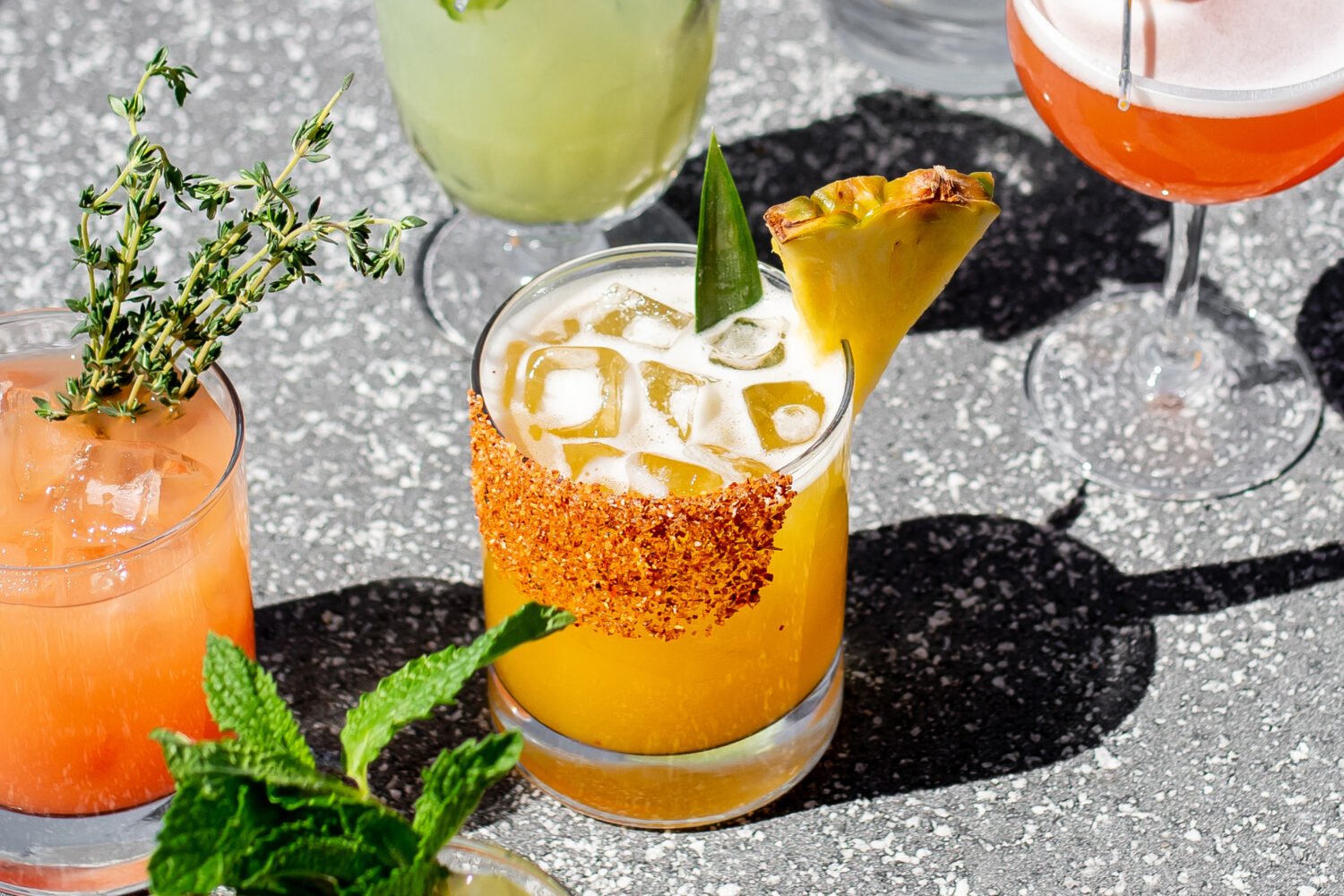About Hunan Taste
Fish in bean-curd sauce probably doesn’t sound all that exciting to you. And if it were delivered to your table at Fairfax’s Hunan Taste—its slender little filets of flounder in a glossy sauce full of chopped chilies, onions, and scallions—not only would you not swoon; you might not even look up from your phone when it arrived.
But if you’re anything like me, once you took your first taste, you wouldn’t be able to resist the almost miraculous way it knits its various elements—hot, salty, bitter—into a tight and exhilarating harmony.
I was dining alone at one of the elegant carved wooden tables. I had just finished running errands and had intended to take a few bites and pack the rest up for home. Instead, I cleaned my plate and then, eager to see what else this kitchen could do, went ahead and ordered two additional dishes, including a preparation as poetical as the fish with bean curd was not: Divine Incense Mint Pork. This, too, was magical—long, crunchy-chewy strips of pork belly tossed with fried mint. I’d never encountered this combination before, but it was simple and brilliant, the vegetal bitterness leavening the primal richness of the meat.
This was midafternoon, the time when servers and managers sit down to a staff meal; the handsome red-toned room was empty. My waiter, astonished and delighted by the crazy solo diner who seemed determined to plow through the entire menu in one sitting, brought me a small plate of the fried tofu he and his coworkers were sharing. Soft, almost custard-like within, firm and crunchy without, and dressed in a delicate sauce tasting faintly of chicken stock and fish.
Returning over subsequent visits, I learned a lot more about Hunan Taste, an offshoot of the popular and critically acclaimed restaurant in Catonsville, just outside Baltimore. I learned that not everything on its sprawling menu is exhilarating or divine, that some dishes will put you in mind of a decent carryout, and that your server—most assuredly trained to usher Westerners toward safe, familiar fare such as double-cooked pork and Kung Pao chicken—should not be relied upon to know the difference.
I also learned, having consumed several meals over the course of a couple of months with an eye to unlocking the mystery of this wide-ranging kitchen, that there’s no discernible pattern to what’s good here, no single key. There are Chinese-American dishes that are good; there are authentic Chinese dishes that are not. Some stir-fries are glorious, like the fish in bean-curd sauce; some are afterthoughts. There are expensive dishes (steamed fish head with chili peppers) that are good, but these aren’t to be trusted more than the cheaper ones—the fish in bean-curd sauce is $18 less than a plate of braised duck, and much more rewarding.
The best shorthand I’ve been able to come up with is that seafood is generally excellent, and you really can’t go wrong with casseroles.
If the fish with bean curd stands as the single best dish I’ve eaten in 2015, a casserole of mushrooms and pork isn’t far behind. Here, again, was a plate of food that looked singularly unprepossessing, a sputtering cauldron of mushrooms, dozens upon dozens of mushrooms, but of a variety I’ve never seen in the West, with long brown tails and tiny black caps.
At a glance, it appeared to be survivalist food. A pot of twigs. But when I pinched a few mushrooms between my chopsticks, I discovered paper-thin bands of pork. Some of their rendered fat had melted into the stems, coating them. The sauce at the bottom of the bowl was pungent and almost smoky, seething with garlic, ginger, and chilies.
It was lunch, and I’d already eaten two other dishes. It didn’t matter. Trying to unravel the secrets of this mysterious casserole, I ended up finishing it and ordering another to go.


















